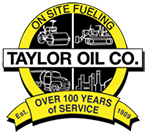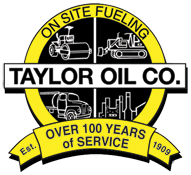Introduction: The $30,000 Wake-Up Call
A trucking company in Southern New Jersey assumed they were all set with their fuel delivery. Their previous supplier had been adequate enough—until the day their refrigerated trailers ran out of diesel.
In a matter of hours, $30,000 worth of temperature-sensitive cargo spoiled. The financial hit didn’t stop there. Restarting the refrigeration systems after they’d shut down cost another $7,000 to $8,000 monthly in service fees.
Their drivers sat idle, accumulating downtime hours while management scrambled to prevent further losses.
This wasn’t just a fuel problem. This was a business continuity crisis masquerading as a simple delivery issue.
After two decades offering fleet fueling solutions from Boston to Washington, DC, We’ve seen this scenario play out countless times across construction sites, marinas, and fleet yards. The pattern is always the same: what looks like a minor logistics hiccup snowballs into a cascade of costs that extend far beyond the price of diesel or DEF.
Most operators focus on the obvious costs, idle labor, unused equipment rentals, delayed project timelines. But the real financial damage lurks in the hidden consequences: damaged customer relationships, supply chain disruptions, emergency service calls, and the ripple effects that can derail operations for weeks.
The trucking company’s story has a better ending. Today, they save over 10 hours weekly in prevented downtime and thousands monthly in service costs. The difference? They stopped treating fuel delivery as a commodity and started viewing it as operational insurance.

The Immediate Financial Impact
Labor Costs That Keep Ticking
When equipment stops, paychecks don’t. A large aggregate company in the Northeast was bleeding one to two hours of downtime daily because its fuel supplier couldn’t maintain consistent deliveries. With union labor rates hitting $75 to $100 per hour—and crews typically running 8 to 15 workers per site, those “minor delays” were costing $600 to $3,000 every day.
The math gets uglier when projects fall behind schedule. Overtime premiums kick in at time-and-a-half. A construction manager in Pennsylvania told me his crew burned through their overtime budget in three weeks trying to make up time lost to fuel delivery failures. “We went from profit to break-even on a six-figure job,” he said.
Equipment Rental Penalties
Heavy equipment doesn’t care why it’s sitting idle—the rental meter keeps running. Daily rates for excavators, cranes, and specialized machinery range from $500 to $2,000 or more, depending on size and capability. When a job site shuts down waiting for fuel, every piece of rented equipment becomes dead weight on your budget.
A joint venture bridge project in Maryland faced exactly this scenario. As the project manager explained, “Machines without lubricants can’t run. Massive union jobs with high overhead on labor and projects that go around the clock can’t afford any unexpected downtime waiting for a supplier.” The stakes were simple: keep equipment running or watch thousands in rental fees evaporate while the clock ticked.
Late return penalties add another layer of expense. Equipment rental companies don’t adjust rates for fuel delays, and extended rental periods can push projects into higher weekly or monthly rate tiers.
Service and Restart Costs
Equipment that sits idle doesn’t just waste rental fees—it creates maintenance problems. The New Jersey trucking company discovered this the hard way when their refrigerated trailers needed expensive restart procedures after running out of fuel. Cold engines, hydraulic systems that lose pressure, and DEF systems that gel in winter weather all require costly service calls to get back online.
Emergency service rates typically run 50% to 100% higher than scheduled maintenance. Factor in the urgency premium—getting a technician to a remote job site on short notice—and a simple restart can easily cost $500 to $1,500 per piece of equipment. Multiply that across a fleet, and fuel delivery failures start looking like the expensive operational risks they really are.



